
21 minute read
Mindfulness and Your Brain, Your Life
Do you know your brain can be “evolved” if you “train” it every day? At the American School of Bangkok Green Valley, we value strategies that can support our students’ learning as we aim for the holistic development of every student. It was thus our honor to invite Dr. Jared C. Horvath to help us learn how to support our students with specific strategies that enhance their learning. Dr. Horvath is a neuroscientist, educator, and author of the International Best-Seller “Stop Talking, Start Influencing: 12 Insights from Brain Science to Make Your Message Stick”. He has conducted research and lectured at Harvard University, Harvard Medical School, the University of Melbourne, and over 200 schools internationally. He currently serves as Director of LME Global, a team or academics and researchers dedicated to bringing the latest brain and behavioral research to teachers, students, and parents alike. Dr. Horvath presented three workshops during his visit: “Your Brain, Your Life”, “Is My Teenager Crazy?”, and “Stop Talking, Start Influencing” . The workshops helped the participants understand how we can take control of our thinking and learning, explore brain functions, understand how the brain develops, and become more aware of all the changes we go through during early childhood and adolescence. As teenagers think differently than adults these workshops gave us insight on how we can support them academically, emotionally, and cognitively.
Dr. Horvath’s main idea of how we can help students learn more efficiently is to understand how the human brain builds memories from the short to long term. Research shows that our memory declines by 20-25% after just two days of receiving information. To avoid this dramatic drop we need to apply a strategy called ‘spacing’. As long as you regularly revisit and review ideas from what you originally learned you can boost your memory create capacity to create longer lasting and more impactful memories of the content.
By Dr. Shira Teng (Li-Wen Lai) International Projects Director The American School of Bangkok Green Valley
Are You an International Leader Looking to Hone Your Skills?
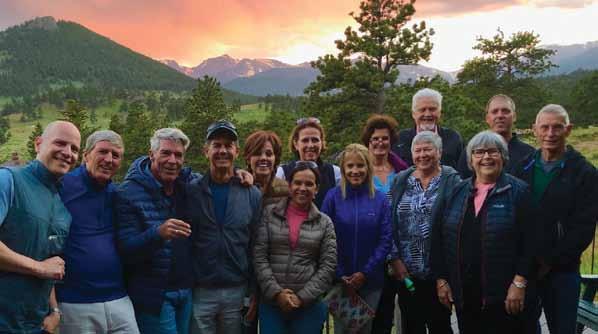
JOIN US! We’re here to support your growth as a leader.
And the AISH LEADERSHIP SERIES is a great place to start! Mapped to the AISH Standards and Threads, each course addresses a critical leadership challenge that has been identified by International Heads of School.

AISH
Leadership Series
• Bite-Sized Skills Courses and
Deeper Dive Impact Courses • For Heads, Deputy Heads,
Aspiring Heads and
Leadership Teams • High quality, cost-effective professional learning • Accessible regardless of location or schedule • Customized around your interests and needs • Connect with leaders worldwide and share practices • Immediate job-embedded impact!
Professional Development Compassion Conference at
The International School Yangon
By Mike Simpson, Director of Curriculum and Learning

Wilma Derksen shared her story with faculty, secondary students and parents.
Earlier this year, ISY hosted its first annual Compassion Conference. ISY Director of Curriculum and Learning, Mike Simpson shared his thoughts on what was a very meaningful and enjoyable experience.


The International School Yangon is a community of compassionate global citizens.
Almost two years ago, this Mission was adopted by The International School Yangon (ISY). It was developed collaboratively by the ISY community under the guidance of an external consultant, John Littleford. Over a period of months, faculty, staff, students, parents, alumni, board members, and organizations whose families served by ISY formed focus groups to establish ISY’s future direction.
Our Director, Dr. Gregory Hedger, often remarks on how proud he is that the ISY community decided to put compassion at the center of everything we do. Proud and also a little surprised. We did not anticipate such a dramatic change to the Mission that had served the school well up until that point. But the community made it very clear that ISY is a community that not only serves itself and its students. To quote ISY’s accompanying Vision, we aim to develop lifelong learners who will be a force for positive change in the world.
Compassion is one of those terms that might mean different things to different people and is often used interchangeably with sympathy or empathy. We believe that there is a difference between sympathy, empathy, and compassion. Sympathy and empathy refer to a person’s ability to understand or even feel what another person is feeling. Compassion describes what happens when this understanding or feeling drives a person to act to help another person.
At ISY, we are constantly reflecting on how we can develop compassion in our students and in ourselves as a staff and faculty. We have always been a caring community (as evidenced by the change of Mission) and we are now more than ever committed to act in the interests of all, including those whose situations and feelings we would struggle to really truly understand. It is clear to us that to begin to develop compassion towards another person, we first must be able to appreciate and understand the perspective of that person.
This need to reflect on what compassion is and how we can develop it in our community was the driving force behind ISY’s first annual Compassion Conference held on September 20, 2019. We consider the development of compassion in all young people to be of the
We wanted to create an opportunity for teachers to come together to listen and share ideas on what compassion means and how it can be developed in their students and in themselves. To help us focus our thinking around compassion at the beginning of the conference, we were honoured to have Wilma Derksen tell her family’s story.
Wilma and Cliff Derksen’s world collapsed when their teenage daughter, Candace, was taken hostage and murdered. Wilma shared how they navigated their way out of feelings of anger and revenge back to compassion, forgiveness and love. Wilma also explored with us the power of sharing the stories of both victims and perpetrators of crime and conflict and how compassion allowed her and Cliff to cross boundaries and work within the criminal justice system, presenting alternatives to cycles of conflict, violence, crime and injustice and building a climate of tolerance, resilience, hope and compassion. Wilma and Cliff’s story features in Malcolm Gladwell’s book, ‘David and Goliath,’ and serves as a powerful of compassion as a source of strength for a couple who could otherwise have been consumed by hate and despair.
Wilma and Cliff spent the best part of a week with us. Wilma worked with all of our secondary students and Cliff worked with our artists. Wilma also addressed our parents on the importance and power of relational forgiveness.
Wilma’s keynote was followed by workshops facilitated by ISY faculty. These workshops covered topics around compassion, service learning, the experiences of Third Culture Kids (TCKs), the experiences of a local scholarship student at ISY, developing cultural intelligence, dyslexia, non-violent communication, and technology that helps students provide feedback to their peers and document their service.
If Wilma’s keynote could be described as a portrait of compassion as strength, the faculty workshops could be described as an exploration of some of the perspectives upon which compassionate action is predicated. The TCK workshop was presented by a teacher with two TCKs and another teacher who is a TCK. The scholarship student workshop was presented by a teacher who was formerly a scholarship student at ISY. These workshops gave invaluable insights into the perspectives, the struggles, the frustrations, and the needs of students who we encounter everyday. Equipped with these insights, those teachers in attendance left better prepared to build relationships, alleviate frustrations and meet the needs of these students. These were just two examples.
Around the same time as the conference, as part of our ongoing WASC Focus on Learning Self-Study, we confirmed and aligned our ISY Lifelong Learner Outcomes with our Mission, Vision and accompanying strategic themes of service learning, inclusion, celebrating culture and diversity, environmental consciousness, and technology integration.
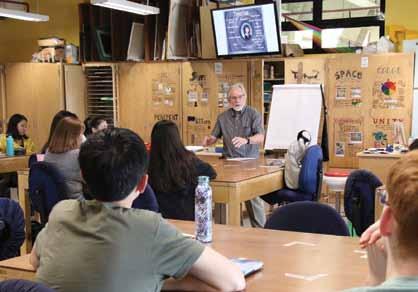
Cliff Derksen incorporated his story in his work with ISY’s budding artists.
Ultimately, we want our students to develop into:
• Compassionate Global Citizens • Lifelong Learners • Agents for Positive Change
To support these learner outcomes we will strive to instil in our students the following ISY Lifelong Learning Attributes:
• Compassion • Collaboration • Communication • Courage • Creativity • Critical Thinking • Reflection
It is no coincidence that compassion is at the top of this list. We believe that compassion for others is what will drive our students and faculty to use their academic knowledge, skills and lifelong learning attributes to make the positive difference that the world is crying out for in so many different ways.

EARCOS Global Citizenship Award & Community Service Grant
This award is presented to a student who embraces the qualities of a global citizen. This student is a proud representative of his/her nation while respectful of the diversity of other nations, has an open mind, is well informed, aware and empathetic, concerned and caring for others encouraging a sense of community and strongly committed to engagement and action to make the world a better place. Finally, this student is able to interact and communicate effectively with people from all walks of life while having a sense of collective responsibility for all who inhabit the globe. Submit your application for Global Citizenship Award no later than April 14, 2020. Visit earcos.org to submit your application online.
Service Learning
Service Learning? It’s a piece of cake!
By Kasson Bratton and Ruth Clarke Nanjing International School

The vehicle testing area. How do you change the service Though we had learned a lot, we still did not have a clear recipe learning culture of a school? to follow. With this in mind, we began by defining, then differentiatWhere do you even begin? At ing, between community volunteering and authentic service learnNanjing International School ing, both important to our overall programme. This gave us a platwe have been asking ourselves form to begin in-depth discussions and ideation with our students. these questions. We launched at the beginning of semester two with a passionate presentation to teachers and then students about authentic serTo bake a cake that is delicious vice learning. They were sold straight away on the principle but had and appealing, you need the lots of questions about the achievability of such an ambitious culright ingredients, a skilled bak- tural shift. We didn’t hang about to answer these; we started mixer, and a dollop of inspiration. ing! Throughout the Middle School conversations flowed, blending To develop a service learning began, and students started to get the idea. programme, the same is true. At NIS, the way that we ‘did This year, we have created some more permanent implements in service’ had to change. It had our “kitchen” to support our progress including a newly created become stale and lacked the ‘Service Learning Block’ in the schedules of all Middle School stusweet authenticity discerning dents, a newly opened ‘Student Bank’ to loan money and issue proservice learners have come to ject grants, and we have taken a deep dive into the UN Sustainability expect. Goals to help focus our student groupings. Last year an opportunity presented itself in the form of fresh ‘ingre- Through this process, we have learned that when the school culture dients’. We had a newly appointed service learning coordinator with is positive with an emphasis on Trial and Error, legacy concerns that an inability to say ‘no’; an Activities Director with a wise head, and a existed around Service, however deeply embedded, can improve. Head of Middle School, new in role and vulnerable to suggestions. Though our cake is not yet baked, the delicious aroma of studentAdded to this was our awesome Strategy Team, ready with input driven, more authentic service learning is now wafting through the gleaned from service-related prototypes conducted the previous halls. Our community is taking notice, interest is building, and our year. The final ingredients came in the form of inspiration from NIST students are becoming equipped to make a real difference in their Bangkok where the students shared their service projects with us community and, beyond that, the world. This, of course, is the sweetand the generosity of Concordia International School-Shanghai in est part of all! opening up their PD workshops with Cathy Berger Kaye to a team from NIS. At this point, it was time to stir things up!
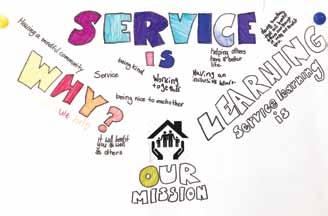
Middle School Art Celebration
International Community School of Bangkok, Thailand
Lulu, Grade 7 Self-portrait from a baby photo (left) Shira, Grade 7 portrait of her twin sister (middle) Hani, Grade 7 (right)



How to Avoid Change Fatigue with Educational Software Rollout
By Ellen Richards. Chief Strategy Officer— Schoolbox Pty Ltd. Australia

Schools are constantly undergoing changes that often challenge the status quo. In the space of educational software, this is a common occurrence. These changes, although can create valuable learning opportunities, can also create resistance and conflict because as humans, we inherently need stability, order, and predictability.
Change fatigue is the name given when the status quo is challenged and employees experience mental or physical fatigue. This is often due to a history of multiple, difficult, or poorly handled changes within organisations.
Low engagement, a sense of apathy, passive resignation, lack of motivation, and resistance towards change are all symptoms of change fatigue.
Schools are a common example where change fatigue can be prevalent. And because of this, K–12 schools can be challenging places to roll out educational software like Learning Management Systems (LMS), School Portals, School Administration and Student Management Systems.
Today’s Learning Environment
The modern learning landscape requires education to be personalised, interactive, and instantaneous. No student learns at the same pace or in the same way, but all students learn through their connection to the community, that is, your school.
When you create a school environment where learning is personalised and the entire school community is engaged throughout the learning journey, your students will benefit greatly.
Educational software like LMS and communication portals strive to assist your school to deliver a personalised learning experience within a highly connected and engaged framework— enhancing and improving education for this new generation of learners. So, how can you avoid change fatigue during the rollout of such valuable educational software?
Elements of a Successful Rollout Strategy
If you’re clear with your objectives and the value it will provide your school, you’re already setting the right tone for the rollout of your educational software.
Let’s look at the elements of a successful rollout strategy for your educational software.
Open Communication
Tell your school what’s happening—parents, staff, students—keep them all in the know. Transparency and real-time information is important for a successful school software rollout.
Provide them with meaning and purpose; a vision that encompasses goals of engagement and support. By communicating meaning and purpose, you’ll evoke connection and motivation within your school community.
IT Capabilities
Although it may be a little obvious, IT capabilities within your school are critical to the success of rolling out educational technology solutions.
Your software provider will of course have the expertise and resources from their end to rollout the system for your school. However, having the IT capabilities within your school to effect the rollout will ensure any customisation requirements are factored into the installation from a back-end perspective.
Also, ongoing management of your software platform will be more effective as the needs of your school may change and so will the way in which you use the software.
Action Plan
An action plan is another vital element of a successful rollout strategy. With an action plan, you can map out the details of the rollout, so you don’t miss anything, but also, you’re able to get clarity on who will undertake what task.
Although your requirements and implementation may be clear within your school, your project can only follow through to completion if you communicate clearly with your educational software provider.
Motivated Team
Of course you can’t undertake the rollout all on your own—you need a motivated team.
Your team will be instrumental in setting the tone and pace of your new school software rollout. They will establish a structure and foundation for ongoing success. But, remember, when finding a motivated team, you need diversity; don’t stick to one department or one set of thinking. The more people you engage across all levels and functions, the greater set of skills you will have. Most importantly, you need people who have a commitment to the change at hand.
Ongoing Training
Ensure there is always ongoing training for your school as the rollout takes place. This will drive positive uptake and, with more learning, people will continue to be engaged.
Some ideas for ongoing training:
• Utilise the help resources given by your software provider. • Open up engagement with community Q&A. • Engage in additional remote or face-to-face training sessions.
And don’t forget to keep the wider school community abreast of the benefits of the rollout every step of the way—this way, energy levels remain high and the rollout will continue to progress.
Rolling out educational technology solutions into your school shouldn’t be taken lightly. There are many factors at play and to reap the rewards, you need to do it right.
To learn more about the elements of a best-in-class rollout strategy, get yourself a copy of our FREE eBook. Just head to our website http://www.schoolbox.com.au/ebooks, or speak to a member of the Schoolbox Team.
10 Steps to Achieve Rollout Success with Educational Software
Empowering EARCOS members with one central platform
Schoolbox is an all-in-one learning management system, community portal and engagement platform for K–12 schools.
schoolbox.com.au
STUDENTS, STAFF, PARENT INTEGRATION ENGAGEMENT PORTAL LEARNING MANAGEMENT SYSTEM S
Student Writings
H’sia’s Experience of Grade 5 Camp
By Amanda Lillian McCloskey Busan International Foreign School
For our grade 5 camp we went to the DMZ (Demilitarized Zone) and the war memorial. We went there for our UOI studying conflicts and resolution. It relates because in the war there was a conflict and there has not yet been a resolution but someday it will happen. We learned so many things and we went to so many places.
First we went to the war memorial where we saw the names of all the people who died and the countries that helped in the Korean war. We had a tour guide that took us around the building, I learned the war started in 1950 - 1953. I also learned that Kim Ill Sung was the leader of North Korea and South Korea did not have a leader. I also learned that America helped South Korea and China and Russia helped North Korea. North Korea thought that the war will end in 3 weeks because North Korea had a lot more guns and machines than South Korea but then America helped South Korea so it lasted 3 years 1 month and 2 days.
We went to the 3rd tunnel that the North Koreans built to attack South Korea. I liked the 3rd tunnel because it was the real tunnel that the North Koreans made to attack. The cool part was that they dug it by hand and the 3rd tunnel is 1,635 meters long (1.01 miles)! We went down by a little subway (without a top), the walls were all wet and cold the deeper we went. It was really cool.
The observatory was really nice too because we got to see North Korea. I learned that the DMZ is 4 km long. We also learnt that the war is still not properly resolved. We wait to find out if there will be peace in Korea.


Mother Earth
By Li-Lynn (Meredith) Goh, Grade 8, Xiamen International School
“What happened?” I asked, but it was as if I was nothing but a ghastly whisper. She laughed, almost sadly.
“Can you believe it? The way that this planet once overflowed with milk and honey and the sun was a ball of fire? I created this land to maybe one day pin yellowed Polaroids to walls with chipping paint. I didn’t regurgitate my insides just so the children could line the streets with their waste. Their eyes once bloomed like the florets in the green meadows, but now they are hazed over like grey clouds tucked away amongst the shadows.”
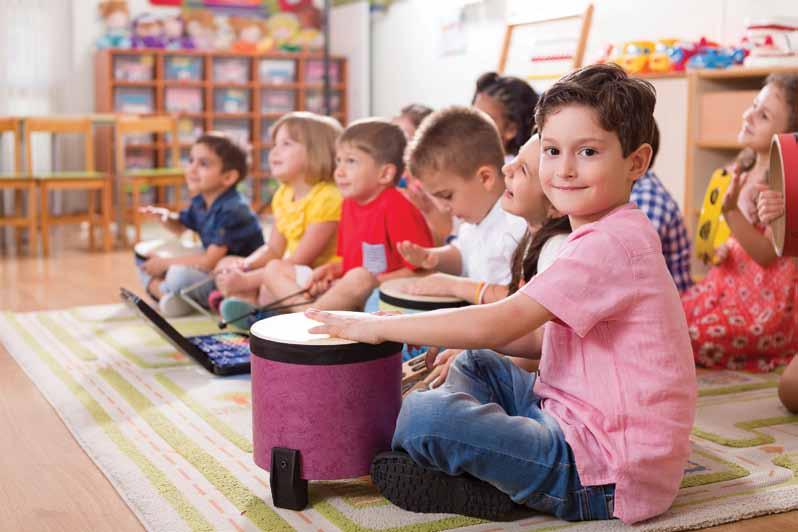
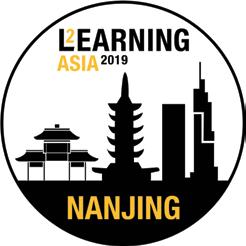
This October Learning2, the conference applauded for being ‘for teachers, by teachers’ was hosted by Nanjing International School.
Each and every Learning2 conference focuses on ensuring the participant experience is meaningful and relevant. It seeks out the best workshop practitioners and offers them an unmatched coaching experience to lead inspirational learning opportunities that provide educators with practical takeaways they can employ in the classrooms right away.
Learning2 amplifies a diversity of Voice and Perspective
Ceci Gomez-Galvez from South Saigon International School led extended sessions on “Empowering and Showcasing Student Voices” and inspired our audience with her powerful Learning2 talk on language equity https://www.youtube.com/ watch?v=m4wQtQAszos. Along with the professional development for our participants and their individual learning journey, the L2 presenters each had their own week of inspiration.
“I truly believe it is our stories that connect us and that empowering advocacy is changing our world. This is why building platforms for showcasing voices is my passion. Thank you Learning2 for giving me the chance to tell my story, share my voice and advocate for language equity”: Ceci Gomez-Galvez L2 Leader
Wang Fang from NIST Bangkok extended our PD to Chinese Teachers from the region with the very first extended session at L2 to be conducted not in English but in Chinese. Her session ran over two days and looked at how to “Cultivate an innovator’s mindset in a Chinese Language classroom”.
The session’s goals were: • Reflect on the readiness of being an innovator in teaching Mandarin • Identify the challenges that to stop us from creating innovative approaches to learning Mandarin? • Collectively Create a hands-on innovative toolbox collectively in for teaching and learning Mandarin • Experiment with some innovative teaching strategies in the workshop • Bring an action plan back to school and keep contributing to an on-going collaborative project via an online networking platform

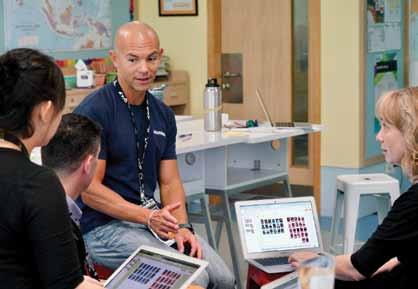
Ed Hagan, PreConference Co-Presenter
Learning2 values all forms of BackChannel conversations
“when L2 said yes to me I didn’t understand the power behind that “yes”. The best thing about this week has been the conversations about learning “: Amanda Lenk L2 Leader
Learning2 learns from our participants, and we’ve come to treasure the ‘sidebar’ conversations that educators bring with them. In order to make more room for those hot topics, in 2020 we introduced ‘L2 Threads,’. Participants were asked at registration to add potential questions to a list, these were voted on and the top questions were used to form our L2 Thread topics.
Learning2 is always innovating and is responsive to participant needs and interests
All our participants were given the opportunity to experience cultural and mindfulness activities during an extended lunch: the ‘L2uneUP’. NIS faculty hosted an array of activities from tai chi, tea ceremonies, Chinese knots to sports and knitting for a cause.
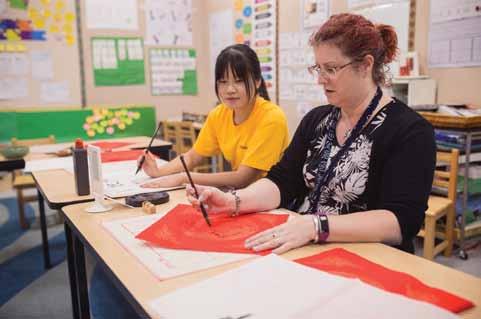
L2uneUP Lunch activities: Calligraphy L2uneUP Lunch activities: Tea Ceremony


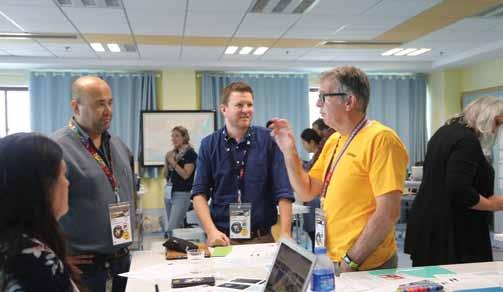
Darnell Fine Extended Session Leader (left) Laurie McLellan, Director Nanjing International School attending Learning2.
what does hosting Learning2 mean to the host school?
“Hosting Learning2 at NIS was a fantastic opportunity to empower student voice, showcase our inclusive learning community and offer our teachers the chance to present, learn, and connect with worldclass professional learning.” Kasson Bratton, Deputy Director - Learning
The 2019 Learning2 Asia conference was proudly hosted by Nanjing International School. Learning2 is considered a leading annual conference, with a mission to “innovate social learning globally.” This fits right in with our forward-thinking Mission and Strategy. The conference was spread over three days with a targeted pre-conference session on Thursday and two main conference days on Friday and Saturday. Over 40 NIS teachers participated in these sessions, with many facilitating teacher-led workshops, running Extended Sessions, and giving L2 talks. NIS had another 60 staff, students, and parents, along with our amazing facilities team, working to make sure the conference met our usual world-class standard. Perhaps the highlight of L2 Asia at NIS was the fact that 20 of NIS students led workshops for teachers, delivered amazing speeches, and inspired participants throughout the conference. Student voice was alive and well!
The theme of the conference was “ConnectED” and hosting conferences such as this does exactly that, helping our school remain connected to the forefront of innovative teaching and learning for the benefit of our students, teachers, and entire school community.
Where can I find Learning2 in 2020?
Consider watching Learning2 Talks from our Youtube channel, or simply go to #Learning2 on Twitter and have a scroll through the ongoing dialogue we have with educators from around the globe weekly.










